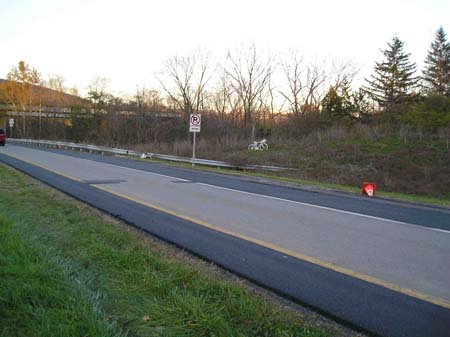A friend of mine once told me his definition of insanity: “doing things the same way and expecting a different outcome.”
We, collectively, the people of these United States , we are insane. We must be; how else can you explain our willingness to accept the death each year of over 40,000 people (with millions more sustaining serious injuries) in traffic-related crashes with nary a shrug? Though we mourn each death as a tragedy, no one seems to be interested in actually changing the behavior or street design to change this outcome this year or the next.
In June 2005, I was invited to take part in a government-sponsored “National Forum on Speeding.” About 200 so-called leaders of the highway and traffic safety movement were gathered together for two days to wring our collective hands over this behavior. Speeding is a contributing factor in about one-third of all fatal traffic crashes in the U.S. And this is a very conservative estimate. Still, when the moderator asked for a show of hands from those individuals who do not speed when driving, only two hands went up. When the moderator acknowledged the two individuals a voice rose from the masses, sounding the word, “liars.”
Before leaving this farce of a conference, I heard the executive director of the Federal Highway Administration refer to the annual death toll on our highways as “intolerable.” His statement gave me pause since these crashes and subsequent deaths are, obviously, something we do tolerate. In fact we seem to accept that some level of fatalities is the price to be paid for our supposed high level of mobility. And, we sure as hell are not falling all over ourselves to do what needs to be done to alter this outcome. We are in a profound state of denial and the only good news is that some of our leaders seem to be suffering from their own cognitive dissonance.
Consider this fact: the chance of death when a pedestrian is struck by a car at 40 mph is 70%, at 30 mph, 40%, and at 25 mph, 5%. So what speed seems appropriate for motor vehicles in high pedestrian density urban areas? Well, it sure as hell ain’t 40 mph! New York City ‘s speed limit is 30 mph but anyone who has ever walked or driven along arterials like the Grand Concourse, Queens Boulevard , Flatbush Avenue , or Manhattan avenues knows that deadly speeding is rampant. A 1999 study on Queens Boulevard by the NYC Department of Transportation found that 25% of motorists exceeded 40 mph.
Given these deadly facts, here are a few nuggets I find difficult to reconcile:
• Why do we feel sorry for drivers who hit and kill pedestrians, bicyclists, and other vulnerable road users and blame the victim?
• Why do we have laws to take away a driver’s license if they take off without paying for the gas they just pumped, but we only give them (at most) a little ticket if they happen to hit and kill a pedestrian as they exit the gas station?
• Why do traffic engineers, who tell us that the design of the road determines the speed at which people will drive, use a “design speed” that is higher than the posted speed limit?
• Why is it that every car sold in the U.S. is capable of exceeding the highest posted speed limit in the country by at least 40 mph (and in some cases by more than 100mph)?
• Why do some traffic engineers set the timing for traffic lights so you will keep getting a green light if you drive faster than the posted speed limit?
A national survey by the motoring rights organization AAA, found that most motorists regularly drive dangerously. “Safety requires three things: safe cars, safe roads, and safe drivers,” said Susan Pikrallidas, AAA’s vice president for Public Affairs. “so far, the focus has been on making cars and roads safer. But driving is a complex task and many of us have very poor driving habits.” AAA is right, driver behavior in the U.S. must be significantly improved.
Enough. This is insane. Where is the outrage? We are, collectively, a body at rest and inertia is a powerful force. In order to overcome it and to begin the process of recovering our sanity we must reject that status quo and demand change.
What would we do differently if we were committed to the outcome of eliminating traffic-related fatalities?
—–
AAA Bad Motoring Survey Highlights:
71% speed 5mph or more over limit.
75% say speeding 5 mph over limit is ok.
20% say speeding 10 mph over limit is ok.
33% of men say speeding 10 mph over limit is ok.
13% admit to driving aggressively.
—————-
Bill Wilkinson, AICP is the Executive Director of the National Center for Bicycling and Walking (bikewalk.org). Wikinson formerly served as the U.S. Department of Transportation’s Bicycle/ Pedestrian Program Coordinator, and later as Director of Programs for the Bicycle Manufacturers Association, before joining the National Center for Bicycling and Walking (formerly the Bicycle Federation) in 1983.
Reprinted with permission from the Fall 2006 issue of Transportation Alternatives Magazine www.transalt.org




